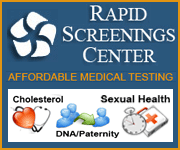Immigration DNA Test Guide
| Immigration DNA Test Summary
|
|
|---|---|
| What: An immigration DNA test establishes immediate family relationships. | |
| Who: Relatives of US citizens seeking to immigrate may be asked to provide DNA to prove a relationship. | |
| Where: All immigration DNA tests must be done with a facility accredited by the American Association of Blood Banks. | |
| When: A DNA test can be done at any time. | |
| How: DNA is collected using saliva or a cheek swap. | |
| Type: Immigration DNA tests are done using a buccal sample. | |
| Why: DNA tests can prove a familial relationship that may aid in one’s immigration to the United States. | |
| Time: The time length to receive DNA test results will vary depending on the country from which a sample is mailed and the lab doing the testing. | |
| Language: Not applicable. | |
| Preparation: No preparation is needed for a DNA test, though the visa applicant will need to make sure they bring a passport and receipt to the Embassy when arriving for their test. | |
| Cost: Costs will vary depending on the facility and shipping rates. | |
By: Erin Hasinger, Tests.com
During the US immigration visa application process, a DNA test may be required to prove a familial relationship. Such proof may be sought when one seeks citizenship because other, immediate family members have already been granted US citizenship. Generally, a DNA test is requested as a last resort if no other documentation that the US Bureau of Consular Affairs finds acceptable is available, such as a birth certificate. An immigration DNA test is used to prove paternity, maternity, full siblingship or half siblingship. DNA testing is not used to determine more distant relationships in immigration cases.
DNA tests are considered voluntary, and applicants are responsible for all costs associated with testing. First, the petitioner must locate a DNA testing facility that is accredited by the American Association of Blood Banks. Accredited labs are located throughout the United States; check here to find a local facility. DNA tests that are conducted using test kits that one receives in the mail are not acceptable for immigration purposes; all tests must be conducted in an accredited laboratory.
Once a suitable testing facility has been located, the petitioner must schedule an appointment for testing. This must be done by the individual seeking the DNA test and not a third party. At the appointment, a buccal swap will be collected. A buccal swab is one that is collected from the mouth, either using a saliva sample or cheek swab.
Following collection, the clinic or facility will submit the sample directly to their main laboratory for testing. The lab will then send a new test kit to the US Embassy or Consulate so that the relative in question may also be tested. Upon receipt of a DNA test kit from an accredited US laboratory, the US Embassy or Consulate will contact the visa applicant to schedule an appointment for a DNA sample collection.
Prior to the visa applicant’s appointment, the petitioner in the US must select a panel physician to compare the two DNA samples. The petitioner also must prepay for the review, and the visa applicant must show a receipt at the Embassy when they arrive for their DNA collection. In addition to the receipt, the applicant must also bring their passport and a photo. The DNA collection at the US Embassy or Consulate will be done by a physician or medical technician, and the collection will be witnessed by an Embassy official. Following collection, the sample will be sent to the laboratory in the US.
DNA test results will be provided directly to the US Embassy or Consulate, who will then contact the visa applicant to continue with the visa application. The petitioner or visa applicant may contact the laboratory directly for a copy of the results; copies will not be provided by the Embassy or Consulate. Note that proving a relationship with an immigration DNA test does not guarantee that one will be granted a visa.
For more information on immigration DNA testing, or to locate a testing site, please visit the Immigration DNA Test Directory.
Sources: US Department of State, American Association of Blood Banks




